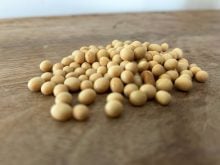SOUTHEAST
Almost three-quarters of crops are in the bin, which is well ahead of the five-year average of 50 percent.
Topsoil moisture conditions for cropland, hayland and pastures are rated about 85 percent adequate.
Average yields are being reported, but quality is declining because of sprouting, bleaching and staining.
Strong winds have lodged and shelled out standing crops.
SOUTHWEST
Three-quarters of the crop is harvested and many producers are finished.
Precipitation varied from trace amounts to 41 millimetres.
Cropland topsoil moisture is rated about 80 percent adequate while hayland and pasture is 67 percent adequate.
Read Also

Federal budget shows remaining disconnect between agriculture, policymakers, panelists say
Canada’s agriculture sector is still disconnected from policymakers in some ways, say panelists at a CAPI webinar
Tough grain is being aerated as time and space allows.
EAST-CENTRAL
A little more than one-third of the crop is in the bin.
Precipitation ranged from trace amounts to 10 mm.
Topsoil moisture conditions for cropland, hayland and pastures are rated about 85 percent adequate.
There are reports of crops yielding much higher than first expected, although quality is declining in some areas.
WEST-CENTRAL
About 40 percent of the crop is harvested.
Rainfall ranged from trace amounts to 10 mm.
Topsoil moisture conditions for cropland, hayland and pastures are rated about 95 percent adequate.
Average yields are reported with declining quality.
NORTHEAST
About 30 percent of the crop is in the bin, which is on par with the five-year average.
Precipitation varied from trace amounts to 47 mm.
Topsoil moisture conditions for cropland are rated about 45 percent surplus and about 55 percent adequate, while hayland and pastures are rated about 75 percent adequate.
NORTHWEST
Thirty percent of the crop is harvested.
Precipitation ranged from trace amounts to eight mm.
Topsoil moisture conditions for cropland, hayland and pastures are rated about 85 percent adequate.
Some areas received frost, which damaged later-seeded canola.














